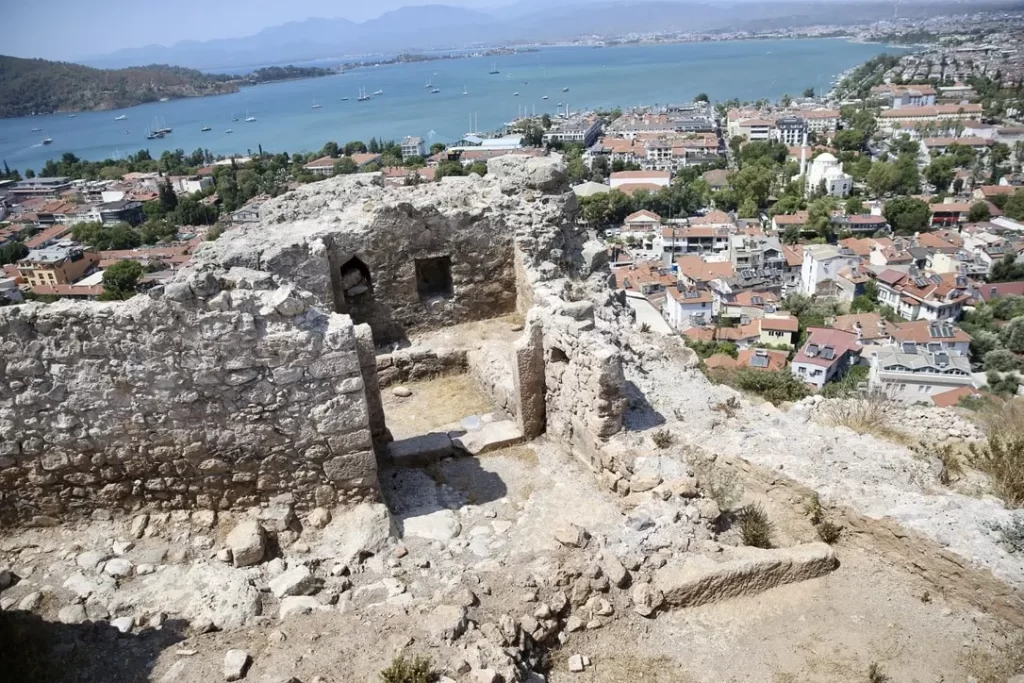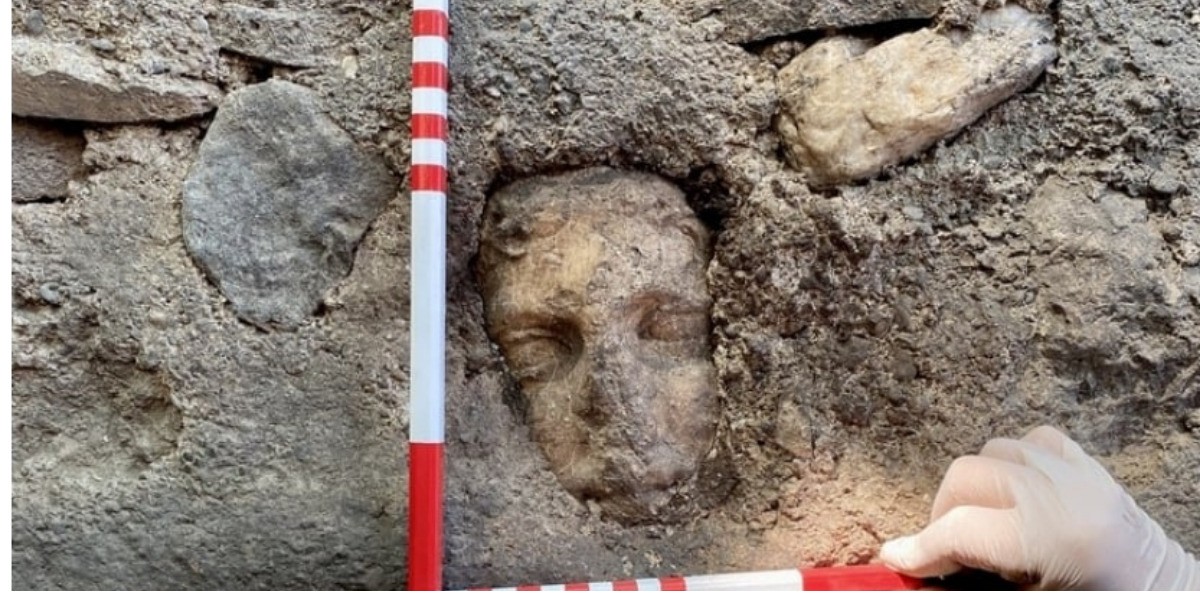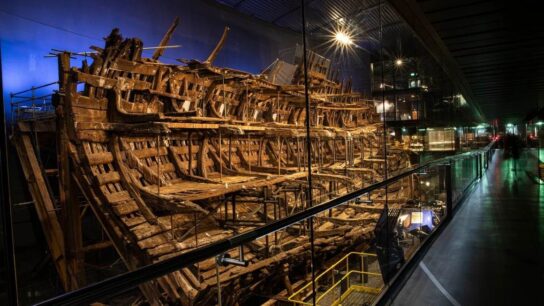2nd-Century Statue Head Discovered at Fethiye Castle
A statue head believed to belong to Apollo was found during the excavation of Fethiye Castle in Muğla, southwestern Türkiye.

The excavation work at the castle, located in the Kesikkapı neighborhood of the Fethiye district, continues under the auspices of the Ministry of Culture and Tourism’s General Directorate of Cultural Heritage and Museums, in collaboration with the Muğla Governorship, the district’s governorship, Fethiye Municipality and Fethiye Museum. The excavation began three years ago.
During the excavation, which was conducted under the scientific responsibility of professor Kadir Pektaş, a statue head believed to belong to Apollo was discovered in the castle wall, and the artifact is now on display at Fethiye Museum.
Also serving as the scientific director of the Fethiye Castle excavation, Pektaş told Anadolu Agency (AA) that the excavation work has been included in the “Legacy to the Future” project carried out by the Ministry of Culture and Tourism.
In addition to the excavation, restoration will be carried out on the castle walls and interior spaces, Pektaş explained.
“A tourism area will also be created at one of the most beautiful spots in Fethiye. During our work in the inner castle, in the area where the flagpole is located, a statue head, which we estimate to date back to the period around the A.D. second century, was found inside the wall.
This is a very important piece for us. In addition, coins from the Turkish-Islamic period, the Ottoman period and the Menteşe Beylik were also discovered,” he added.
Pektaş noted that the inner parts of the castle revealed a large number of cannonballs, everyday items and ceramic fragments.
He mentioned that research is ongoing to determine to whom the statue head belongs, saying: “The statue head may belong to Apollo or another historical figure.”
Pektaş emphasized that the castle, with its view and archaeological richness, adds great value to the region.


Pektaş noted that once the excavation and restoration work at the castle is completed, it will contribute to increasing the cultural tourism potential of the region.
“Generally, sea, sand and sun tourism dominate the region. This is important, but to extend tourism to 12 months and increase tourism revenue, the reasons for people to visit these areas need to be increased.
Visitors need to be encouraged to spend time here. Fethiye Castle, which is located opposite the Amintas Rock Tombs, will be very important in this regard.”
“The upper part of the inner castle belongs to the Ottoman period, while the lower part belongs to the Hellenistic period. This is a very lively spot where you can experience two distinct periods at the same time. The castle also dominates Fethiye Bay.
Last year, a theater was unearthed in the lower part. Once the restoration is completed here, the first early theater of Türkiye and the Telmessos region will have been unearthed and opened for use. This will also contribute to tourism and the cultural potential of the region,” he added.




